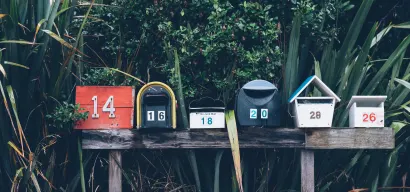We created a four-part ABM guide to share some ideas and tips we have with you to help you get started. In part one, we defined ABM and established its popularity and benefits while also taking a look at the impact of the covid pandemic. In part two, we covered ABM best practices and now it is time for some examples to give you concrete use cases.
It is now time to take a look at some examples!
The series:
- Part 1: How to deliver personalized experiences for ABM success (read here)
- Part 2: Best practices for ABM success (read here)
- Part 3: Examples of personalized ABM experiences
- Part 4: Personalize ABM content for each stage of the funnel (read here)
Personalize landing pages at the account level
So you’ve spent a lot of time researching your prospect and developed some powerful email templates to get their attention. They may click through, but then...crickets. You’ve lost them when they land on your page. Consider personalizing the page at the account (company) level to increase the likelihood of conversion.

You can personalize the headline with their company name to make an impact, or adjust the visuals to represent their industry. In the example below, you can see how Billable uses Unless to incorporate Hotels, inc., one of their target accounts on to the page.
The first change, of course, is adjusting the headline to include the name of the target account. But it’s possible to go further by adjusting the rest of the text to make it relevant to their business. For example, here they’ve also swapped the happy customer quotes to feature companies within the travel industry. Click here for more personalization ideas at the account level.

Personalize landing pages at a contact or role level
More than half the work in an Account-Based Marketing campaign will go into identifying your key contacts at target accounts. You’re probably personalizing your emails or LinkedIn messages for these contacts, but what about your website? Creating a personalized page for every contact might require a lot of work. Instead, you can use Unless to display tailored content dynamically within a single page - it’s as if you are speaking to each person individually.
Think of personalizing the headline with a particular person’s name or tailoring it based on their job title. If your key contact is a salesperson, they want to close more deals. Your headline and subhead can read: “You’ve come to the right place, Anton. Business development managers like you love our CRM. It makes relationship management easy and helps you close deals faster with simple workflows.”
Billable also uses personalization for this purpose. In this case, they have personalized their headline for a contact in one of their target accounts, inserting her name: Claudia. They have also mentioned the name of the account manager that is in touch with her: Lexy. Lastly, a subtle but nice touch is that they highlight quotes from happy customers who in this case happen to be CFOs, just like Claudia. More on this example here.

Personalize benefit pages
So you’ve reached out to target accounts and some of them are actively considering your proposition. How can you encourage them to move down the funnel? Send them a follow up message and link to a personalized page that makes the case for your solution. Think of this page as something they can also share internally as part of the decision making process. You can personalize the headers and subheads, the CTA, and even social proof based on the visitor’s industry - for instance.
In the example below, you can see a landing page that Billable uses to highlight the benefits of its product. While generic it is handy to have such a page as your starting point. You can then go ahead and make this page more to the point with personalization.

Billable does this by injecting the name of the target account in the headline, intriguing the reader in the subhead and changing the CTA to include a case study they know Staycation will find interesting. They have also adjusted the logos on this page to include NomadTravel and GuruTrips to make it more relevant for Staycation. Read more about this use case.

Personalize web pages to win over key accounts
Last but not least, let’s say you know some of your target accounts are using competitor solutions. Personalization can help you make an impact here as well. Creating comparison articles and (landing) pages that highlight your USPs is a good idea. You can then run ads targeting these accounts on LinkedIn.
Summarize why you’re better than your competitors above the fold, using headlines and subheads. For example, highlight specific features or pricing advantages that make you stand out. If your main USP is your dedicated customer support, then mention that as well. You can also create personalized comparison tables or include an incentive in your call to action. For instance, “Sign-up today and get 10% OFF on your first year,” or “Free onboarding for {{competitor name}} customers that switch this month.”

The company below offers web design software for teams. They compete against really big players. Their pricing makes them attractive for people who are looking for a more affordable alternative. They are also browser-based, while many of their large competitors require native app installs. They use Unless to create highly personalized and compelling landing pages to highlight these benefits compared to competitors. More examples here.

Make sure you check out the fourth and final installment of our ABM series! In part four, we provide examples that are specific to each stage of the funnel.









